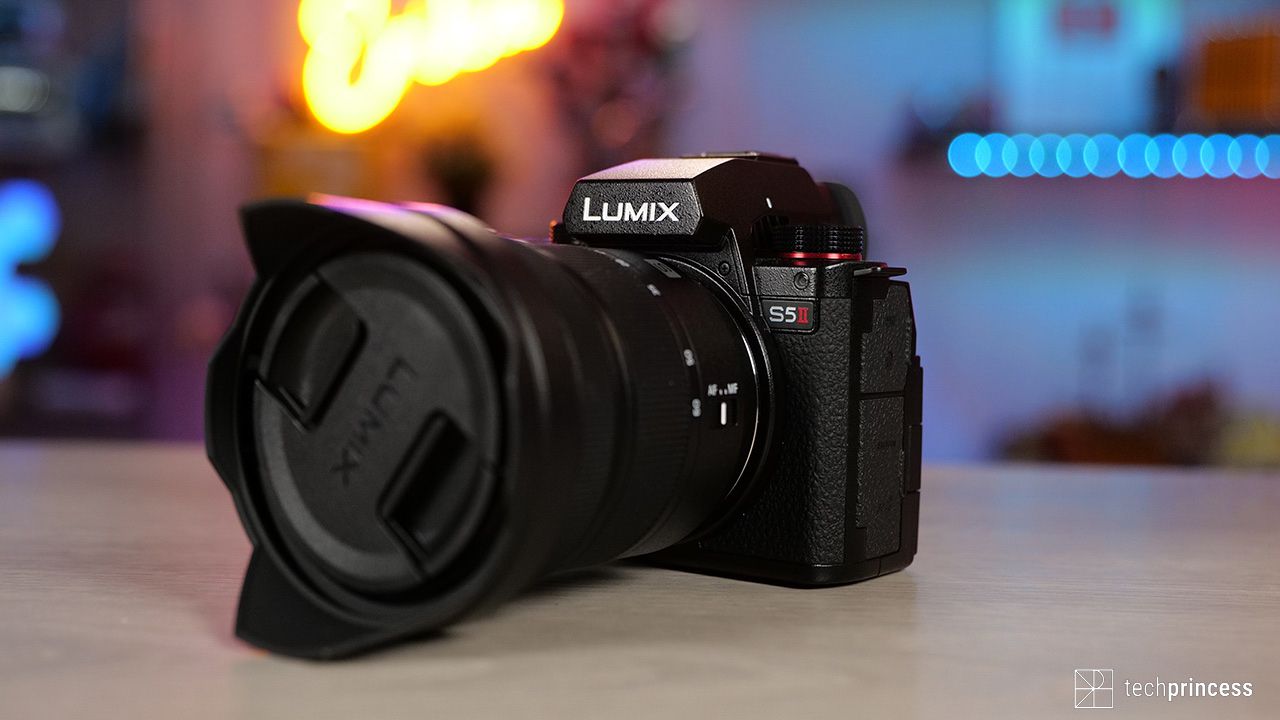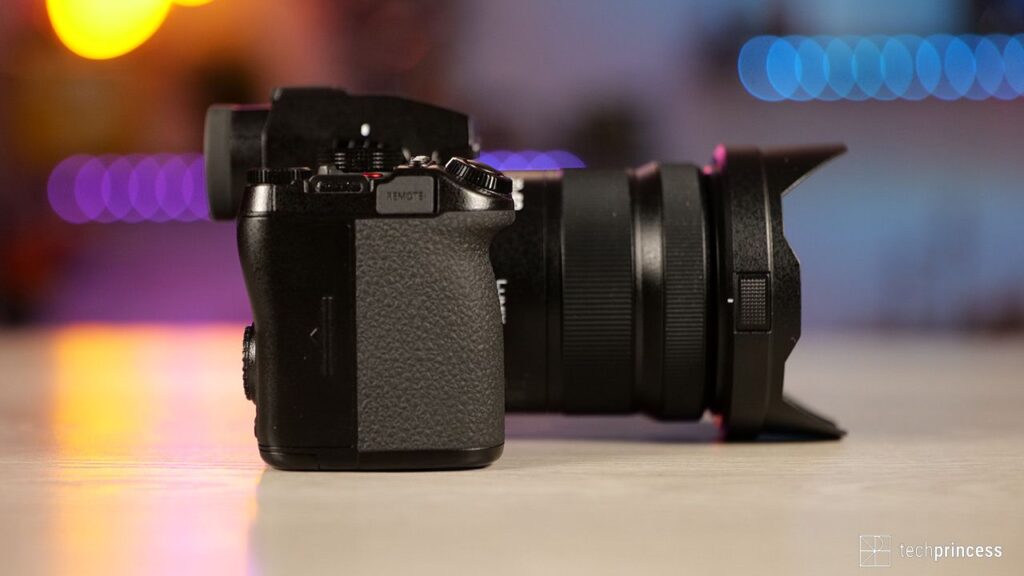New processor, new sensor, new phase detection autofocus: we could summarize it like this Panasonic Lumix S5 II. “We could” but well, obviously we won’t, also because there’s really a lot to say about the Japanese company’s new full-frame mirrorless, a product that – we anticipate it immediately – winks more at videomakers than at photographers hard and raw. But that doesn’t mean it doesn’t have something to offer them too.
But now it’s time to take a step back and dive into this Panasonic Lumix S5 II review.
The Panasonic Lumix S5 II review
“Explode your creativity“.
It is the claim that you find on the official page of Panasonic Lumix S5 II.
No specific references to photos and videos but a short sentence that sums up both. And it makes sense view the double soul of this camera. Double because on the one hand it was created to give us shots that are easy to manage and edit and on the other hand videos that guarantee all the versatility a videomaker may need. In short, we could almost define it as a product for “creators”, at least on paper.
And in reality?
The technical characteristics
In reality, of course, let’s start with the technical characteristics.
Sensor: CMOS da 35 mm full-frame / 24.2MP
Processor: L2 Technology (developed with Leica)
Lens mount: L-Mount
Focus: Phase Hybrid AF at 779 points
Dual ISO: Auto/Low/High
ISO Sensitivity: 100-51.200
Maximum image resolution: 6000 x 4000L (RAW, JPEG), 96MP (RAW, JPEG)
Video: up to 6K 30p/25p 4:2:0 10-bit – C4K/4K 60p/50p 4:2:2 10-bit with unlimited recording
Viewfinder: OLED LVF da 3.68m punti e 0.78x
Memory card: 2 x SD/SDHC/SDXC (UHS II)
Monitor: LCD 3″ from 1.84m points
Gust: 30fps (electronic shutter), 7 fps with AF-C (mechanical shutter)
Connectivity: Wi-Fi, Bluetooth
Dimensions: 134.3 x 102.3 x 90.1 mm
Weight: 740g
Panasonic Lumix S5 II review: how does it fare in the field?
The first thing we noticed is undoubtedly the renewed autofocus, now with phase detection. We’re still far from Sony and Canon’s achievements in recent years, that’s true, but it’s hard to criticize it on this Lumix S5 II. With his 779 points he gives us away excellent coverage, is responsive and locks on to the subject well.
Alongside this great novelty we find instead a great certainty: the stabilization. Here Panasonic undoubtedly remains the market leader, with this specific model that can also count on additional digital stabilization, called Dual I.S., da 6.5 stop. The result? Still image, from an easel, despite a small and inevitable crop.
Obviously you can’t exaggerate with the camera movements, otherwise the Jello effect will make its presence felt but in any case you have a good leeway and freedom.
The sensor is a 24.2MP full-frame CMOS with dual native ISO. The most attentive of you will notice that the resolution is the same as the previous model. True but the rest is result of the collaboration with Leica, not to mention that you can go up to 96 megapixels with the high resolution shooting mode.
Another big selling point is the dynamic range: 14 stops in V-Log and V-Gamut mode that allow you to act in post-production to recover both highlights and shadows.
However, this is not the only aspect that matters when this little gem is placed in the hands of a video maker.
So let’s talk about codecs, bitrates and freamerates.
Panasonic Lumix S5 II can record fino a 6K @30 fps 4:2:0 a 10 bit (in 3:2, which is the native resolution of the sensor), which means no 4:2:2 in 10 bit, which limits us a bit in post-production.
We then go down to C4K which can record up to 60fps in 4:2:2 at 10 bit (in 16:9) but with one thing that will make you turn up your nose: unfortunately in 4K @60fps you will have an additional crop on your image final but Panasonic has tried to compensate with unlimited registration associated precisely with the latter mode.
We would certainly have preferred to avoid the crop but it is impossible not to notice how even the competitors, in the same price range and with a similar sensor, adopt this same solution.
What else is there to report? Well, finally the two SD slots are updated to become UHS-II.
We must necessarily spend a few words also on the photographic front because it is true, as we anticipated at the beginning, that the Lumix S5 II seems more devoted to video but it is also true that many professionals find themselves managing both photos and videos.
So how does it behave? In general she is very responsive. We appreciated the burst of up to 9 fps with the mechanical shutter and up to 200 shots in RAW before the buffer fills up, while we reach 30 fps with the electronic shutter and up to 300 images.
It can get to 96 megapixels thanks to integrated Pixel Shiftcombining multiple 24.2 megapixel images, and can count on fast and precise focusing.
RAW files are nice to work with and in line with competitors.
LumixS5II_1
We also spend a few words on aesthetics. Panasonic’s mirrorless is taller and thicker than the previous versiona change necessary to make room for a fan that occupies the place that once belonged to the pentaprism in reflex cameras.
The dials and buttons are in the right placealways easy to reach. We absolutely loved it the key to switch from screen to viewfinder and be able to exclude the latter when, for example, the proximity sensor is accidentally covered which in this model has been moved above the viewfinder.
Wondering if there’s anything we didn’t love? Actually yes: the battery and the menu.
At first, yes 220 mAh, it does not guarantee great autonomy. The S5 had accustomed us to taking 440-450 photographs with the rear screen always active, then moving on to 470-480 only with the viewfinder up to 1400 photos in “Power Save Mode”. Unfortunately, with the Mark II, shots with the rear LCD screen always on or with the viewfinder drop to 370.
Another sore point: the menu. The options and functions are many but the general aesthetics should be reviewed in favor of a more attractive, modern and simplified interface.
The Panasonic Lumix S5 II review: conclusion
After spending a few weeks with Panasonic Lumix S5 II It’s time to draw the necessary conclusions, starting as always from the price: 2.199 €.
It is a machine dedicated to the one-man bandto videomakers who find themselves working alone, to professionals who want to open up to videomaking with a complete camera that boasts, in our opinion, excellent value for money, without renouncing features that not all competitors have such as, for example, external recording on Atomos Ninja in 5.9K 30fps 12bit RAW.
Here, you have to take into account an optical fleet perhaps smaller than the competition and characterized by important prices.
If you don’t know which one to choose, our suggestion is to go for the 24-70 mm: it’s very precise, very sharp, perhaps a bit heavy but with excellent performance.

























Leave a Reply
View Comments